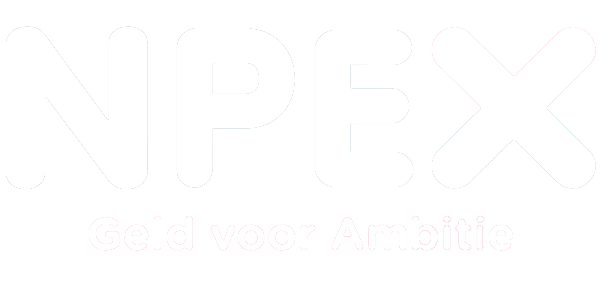It has been almost 12 month since Rohit spoke the heavy weighting words: We need to disrupt the ECM Space. Change is needed and there needs to be an alternative for the 2de platform. A new direction for ECM!
In the first blog leading to Momentum 2016 it is a good time to reflect what has happened since that bold statement and some reflection from the years before and how Rohit got to that statement. Momentum16 will be my 21st Momentum to get to the vision I will express below and since I got in contact with Documentum in 1995 a lot has happened and I am all for a new direction or a new step in maturity of ECM, but is it that easy/doable?
In 1982 when Howard Shao and his team came up with Documentum and the object-related model with a very extensive and flexible security model, it was new and changed the world of ECM. It is impressive to see that the dm_sysobject and the dm_acl are still the fundament of Documentum. But a concept of 1982? Is that still actual and in line with the ‘new normal’ of this digital age? It is good to look back and see what has happened with Documentum and why and try to make some conclusions about the best steps (according to me).
When I started with Documentum we were in the top of the client/server age. Documentum had their super client WorkSpace. A heavy duty client application with for that time very flexible interface with a lot of functionality and a more than acceptable performance. In those times performance was the main pain. The hardware and database capacity made all ECM systems slow and the immaturity of the platform made it often a challenge to get them ready for production.
In 1998 my first Momentum we were all amazed by the new concept of the browser and Documentum came with their version of an application server with a full interface in it. Whitney Tidmarsh gave a super in-depth session about the new three-tier model and RightSite and we all knew we would win the world. Documentum was ahead of the competition but maybe a bit too fast and the performance and stability of the whole stack was a challenge. Still making a solution with Documentum was so much easier that their competitors like FileNet or Open Image (Wang). Why was that? It is simple: the base was so strong and consistent that it you really could focus on the other challenges.
And the world changed and open source showed its face and the web became more flexible. Rightsite was becoming out dated. Documentum invented there 7 layer configuration model for the web: WDK. The idea might have been good but maintaining any changes was tricky. WebTop is still used a lot, everybody complains about the outdated interface but I have seen a lot of great implementation that really gave great ECM support to companies across the world. And why is that? I think the answer is still simple: the base is so good: dm_sysobject and dc_acl.
And now in the new normal with IoT where the world demands user friendly and flexible IT, Documentum comes with D2 and xCP2 with interfaces that meet the demand for UX, flexibility and maintainability. With now the front end in control and mature we see that implementing a good and solid Documentum solution is easy if you know how to combine the perfect foundation with the flexible interface options. It seems that we are there and we can take over the world again.
But simultaneous with a great UX everybody demands the cloud and more precise the public cloud. Jeroen van Rotterdam was very right in his statement that Documentum can do a lot but it is not a multi-tenant environment that fulfills all demands for tenant separation and control. So EMC-ECD needs to come with a new platform with new demands and possibilities. So project NextGen Server was started and somewhere last year it would change to Project Horizon. What I expected of this was that it would be so very different and new and all that great stuff but that something would not change: the base is so good: dm_sysobject and dc_acl.
11 month after the announcement of Rohit I have to say: I don’t know. I have seen a number of demo’s/video’s of Snap, Exchange, Assent, Jazz and Shelf but that is all, no release date, no playgrounds for partners etc.. So the conclusion for now is simple: Did EMC disrupt the ECM space? Not in 2015 and the most important announcement we want for MMTM16 will be about the progress and availability of the disruption: Project Horizon or what the new name is going to be…….
What have I seen sofar: dm_sysobject and dm_acl are gone…. There might be a building block or two that might give you some sort of basic object model but for the rest it is all XML so you are free to make a mess out of it. I’m worried that this will mean that we will not reuse the power of Documentum in its new generation and I think that will be a missed opportunity.
What is interesting to see is that in the other big win from EMC-ECD: InfoArchive they started off only with xDB (The XML-database) to archive all stuff, but before the solution came to its full potential more control and security was needed and in the end the conclusion was: We need a strong security model and the ability to define clear objects and object-structure as powerful and flexible as in Documentum, so we just added the content server from Documentum to the mix and suddenly InfoArchive is very secure and strcutured. Why, you can guess, Documentum has it perfect dm_sysobject and dm_acl.
So what do I expect to hear at @MMTM16 when it comes to the public cloud? A lot about the new name for Project Horizon and a lot about the perfect new app’s that EMC-ECD has created on the platform, but hopefully also something about the perfect fundament that demands structure and control in your object configuration and security that mimics a lot like: dm_sysobject and dm_acl!! And last but not least the way we partners of EMC-ECD can reuse this potential disruption of ECM, because the only way EMC-ECD is capable of disrupting the ECM space is by allowing partners like Informed Consulting to build the prefect vertical apps that will rock the world.
What’s up next? In my next blog I’ll try to reflect my thought about Documentum xCP3.0 (or 2.3??) and what is the good, the bad and the ugly is in the new IoS case management.

















